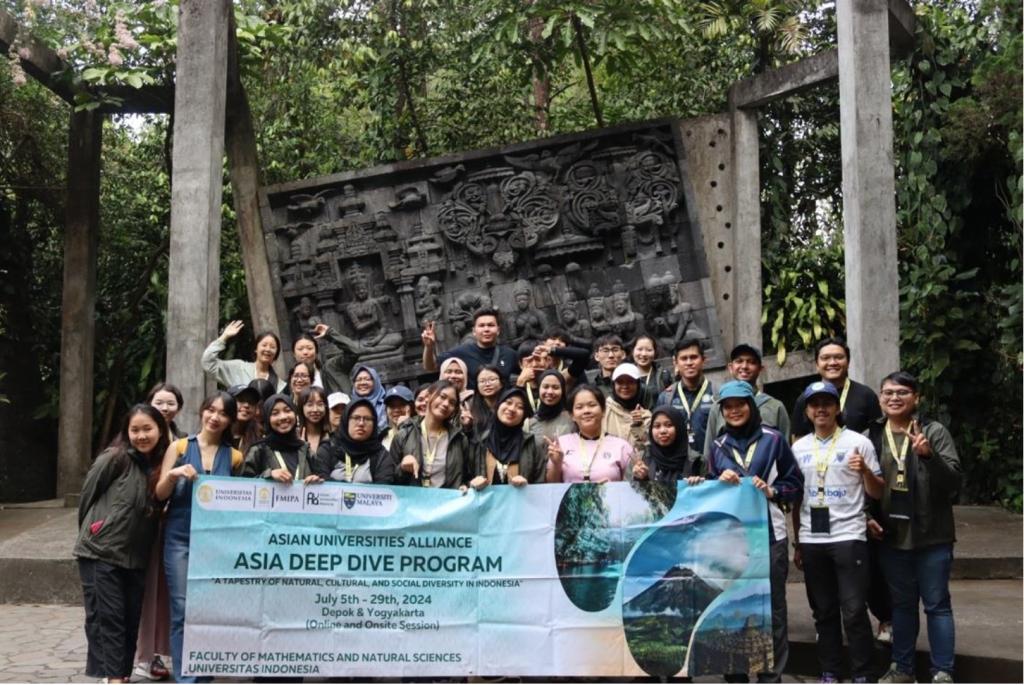The Asia Deep Dive Program 2024, organized by the Faculty of Mathematics and Natural Sciences at Universitas Indonesia (UI), concluded its successful run from July 9 to 29, 2024. The program, which spanned over three weeks, was a blend of online and offline activities, offering a unique opportunity for cultural and scientific exploration across Indonesia's rich and diverse landscape.

The program attracted a diverse group of 27 students from 9 universities across the Asia region, including Universitas Indonesia, Universiti Malaya, Chulalongkorn University, Peking University, The Hong Kong University of Science and Technology, Seoul National University, The University of Tokyo, Nazarbayev University, and Tsinghua University. The initiative aimed to immerse students in Indonesia's vibrant culture, natural wonders, and scientific advancements.
From July 9-18, the program offered an 8-day online lecture series for students to learn aboutgeodynamics, volcano activities, and earthquakes of Indonesia, history and culture of Java, conservation biology, biodiversity, ethnobiology, etc.

Following the online lecture’s part, the Asia Deep Dive Program 2024 carried out a series of enriching experiences that delved into the heart of Indonesia's cultural and natural treasures. Students embarked on an adventure to the active Mount Merapi volcano, where they witnessed firsthand the government's real-time monitoring efforts, providing a unique perspective on the interplay between human vigilance and natural forces. Their journey continued with a visit to the Ullen Sentalu Museum, which served as a portal into the rich tapestry of Java's cultural and historical past. The exploration of Gua Pindul, a karst cave, allowed participants to marvel at the geological and speleological wonders shaped over eons, while a trip to the world-renowned Borobudur Temple offered profound insights into Indonesia's spiritual and artistic legacy. The program culminated in a visit to Giriloyo Village, where the art of batik craftsmanship came alive through hands-on experiences, leaving an indelible mark on the students' understanding of traditional art forms.


Feedback from participants was overwhelmingly positive, with many expressing their appreciation for the immersive experience and the opportunity to engage with local communities and experts in various fields.